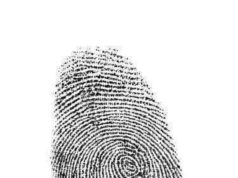
Larceny committed with the element of trespassory taking involves the perpetrator stealing property that rightfully belongs to another with the intent of permanently depriving the rightful owner of that property. In both petit larceny and grand larceny, the perpetrator takes part in trespassory taking of property from its rightful owner.
Trespassory taking means that the perpetrator acquired property or possesses the property, even though they have no actual right to the property. The language of larceny laws was changed in the United Kingdom, when the Theft Act of 1968 was written. The language was streamlined and helped to simplify laws as they pertained to theft, eliminating confusing terms such as trespassory taking.
Yet laws in many countries, including the United States, are based on common laws that were originally defined by the use of such language. While simpler terms may now define the laws, the premise remains the same. Theft involves a person that possesses, for some length of time, some property that rightfully belongs to someone else.
In petit larceny, the perpetrator is guilty of stealing property with a small value, such as items at a convenience store. In grand larceny, they are charged with stealing property worth some set amount of money, with that amount being determined by jurisdictional laws. For example, a particular jurisdiction may set the limit at $200 for petit larceny, with any amount over that being considered grand larceny. In either case, however, the perpetrator will have violated the rightful owner’s rights to possess the property by committing trespassory taking.
In order to be guilty of trespassory taking, the perpetrator must have had knowledge that the property did not belong to them. However, to be guilty of either petit larceny or grand larceny the criminal did not have to be fully aware of who the actual owner of the property originally was.
To be charged with either grand larceny or petit larceny, the individual must have known that said property did not belong to them and that they had no ownership rights to that property. While the perpetrator does not have to know who did have ownership rights to said property, they must have been aware that they were not the rightful owner.
Trespassory taking simply means that the perpetrator did take property that they knew they had no ownership rights to and that some other person did indeed have the possession rights for that property. Possession is a key factor in larceny. It does not matter who owns the property at the time that someone steals it, it only matters that somebody else has possession rights of that property.

























